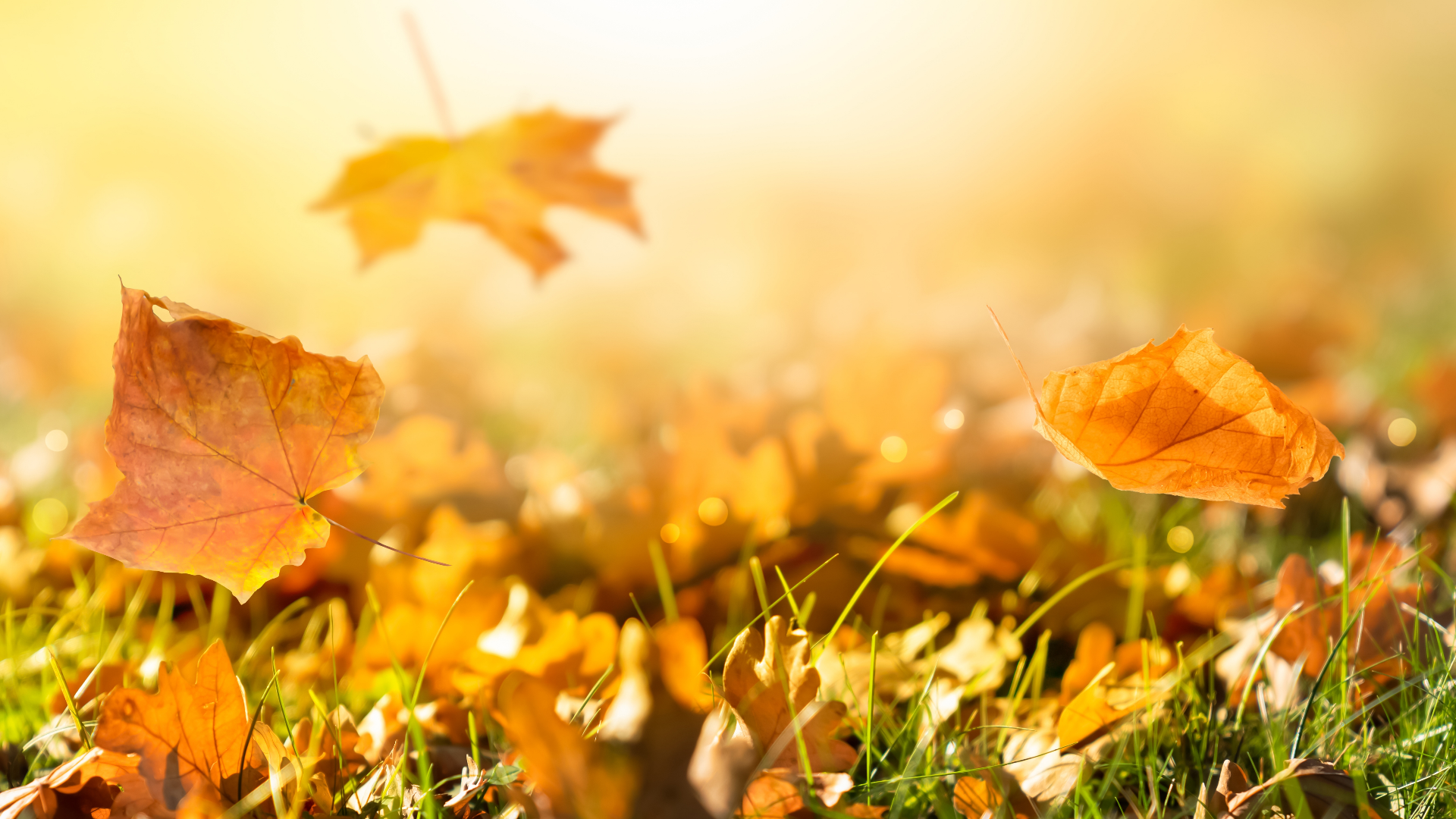Here's when the trees might start changing colors this fall in Kentuckiana
With rolling hills and dense forests, Kentucky and southern Indiana can have beautiful, vivid colors extending for miles.
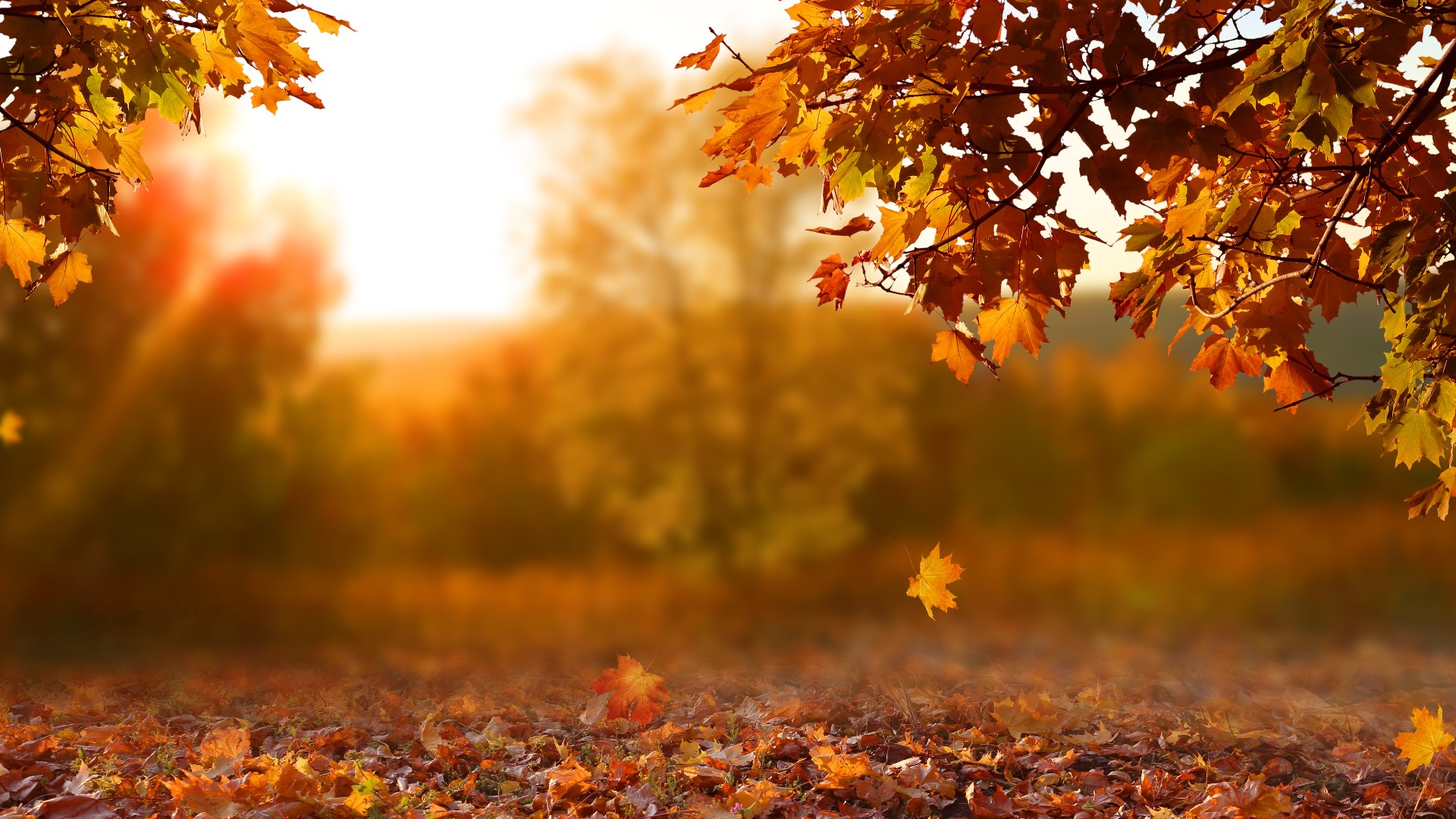
Today is the first day of autumn! After near record-breaking heat to end summer, the extended forecast is cooler.
The arrival of fall also means leaves will soon start changing colors.
With rolling hills and dense forests, Kentucky and southern Indiana can have beautiful, vivid colors extending for miles. The vividness changes from year to year, often influenced by the preceding summer’s weather.
The summer of 2022 was one of the hottest in years with a moderate drought in the middle. This has caused some premature coloring on certain trees (particularly maples) and may result in less a colorful landscape this year.
We'd love to see your fall colors!
Submit them to the Kentucky/Indiana Cloud Watchers page on Facebook, or email them to yourphotos@whas11.com
Peak colors across the country
Trees change their color from north to south across the continental United States. That’s because temperatures cool to “color changing levels” sooner than more southern locations.
The color change for areas that border Canada can begin as early as the first week of September.
It’s a bit of a domino effect from there with colors slowly changing and becoming more intense as the weeks progress.

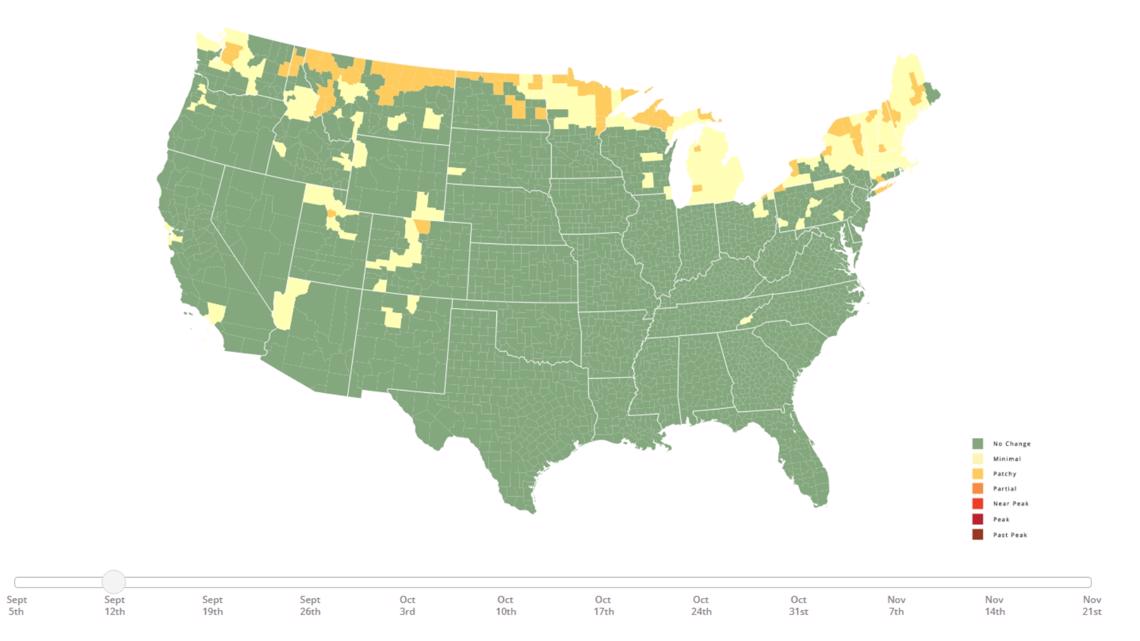
Colors usually start to change in the Ohio Valley the last week of September or first week of October, peaking late October.

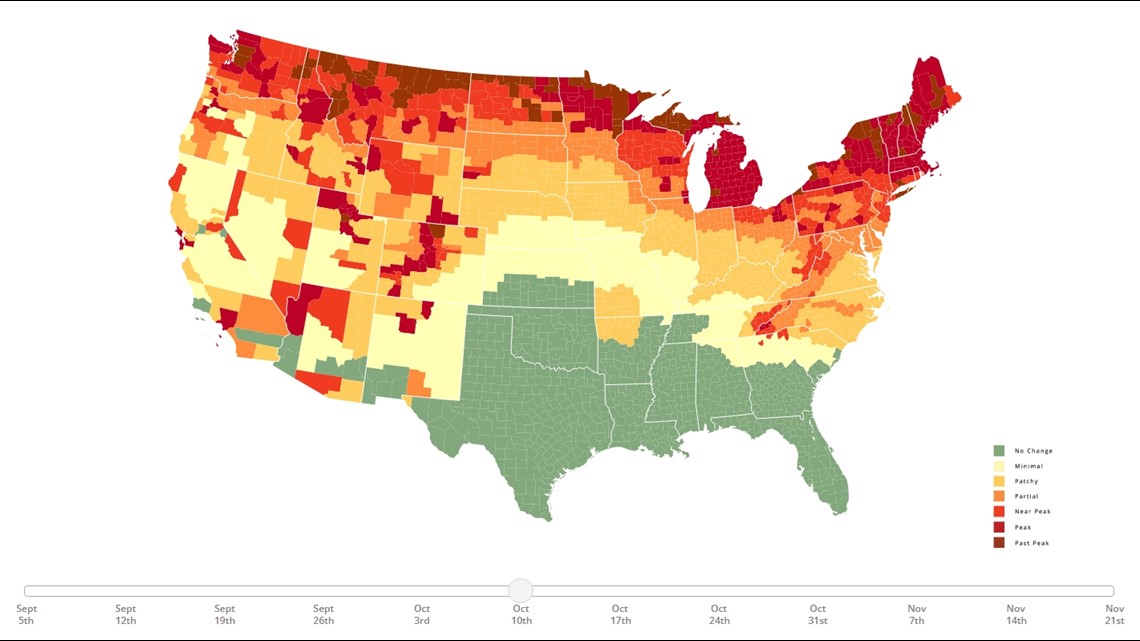
By early November, trees in our area are past their peak with many dropping their leaves or already bare.
This can change yearly depending on various factors, which we’ll explain.
Weather and leaf colors
Although trees have long lifespans and are sturdy organisms, they are still vulnerable to short-term weather patterns which can either help them thrive or struggle.
The vividness of colors is dependent on several factors, with temperature and moisture being the main two.
Extended hot and dry summers can strain trees making them work harder to produce the sugars in leaves needed for food production.

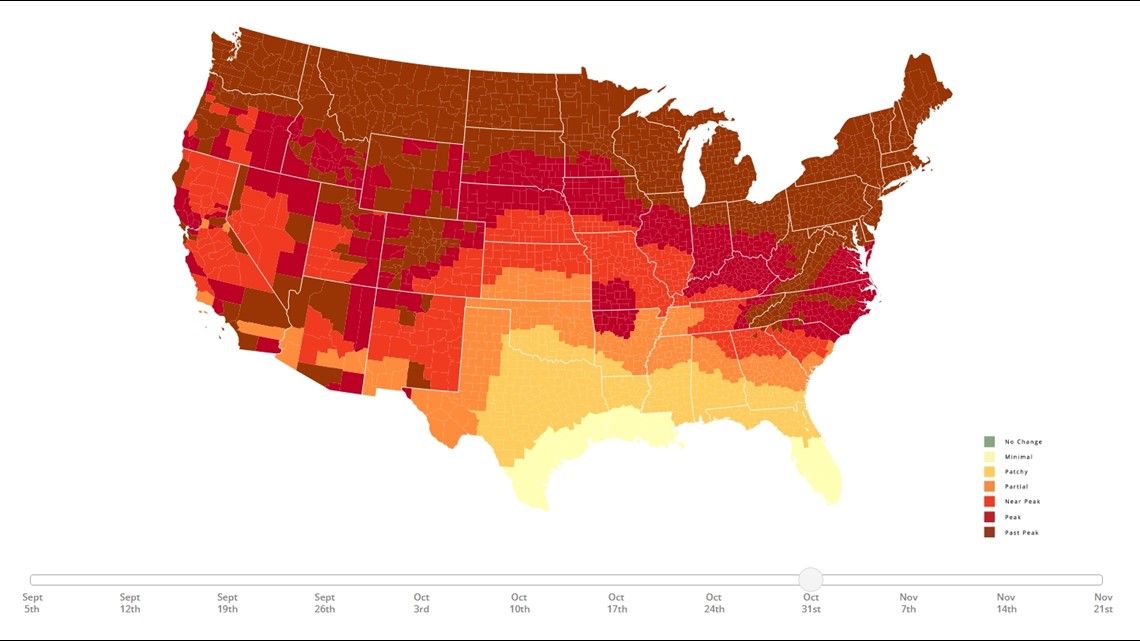
This can cause premature coloring on heat and drought sensitive trees even during the summer.
If this premature coloring doesn’t happen during summer, it might instead happen a few weeks earlier than usual in the autumn as sunlight becomes less intense.
For the most vivid autumn colors, cooler, wetter summers are ideal to prevent tree stress and ensure maximum sugar production.
In early autumn, mild sunny days with cool, above-freezing nights appear to make trees happiest when it comes to the color production.
That said, a summer with a drought but not excessively hot temperatures may still negatively impact color.
How the leaves change color
The leaves of a tree produce the sugars needed to feed it and keep it healthy.
The long, abundant sunshine in spring and summer encourages plant growth. This helps the chloroplast (the cells responsible for the green color) photosynthesize, manufacturing sugars out of sunlight for tree food.
Leaves get their signature green color from chlorophyll – a pigment found inside of the chloroplast.

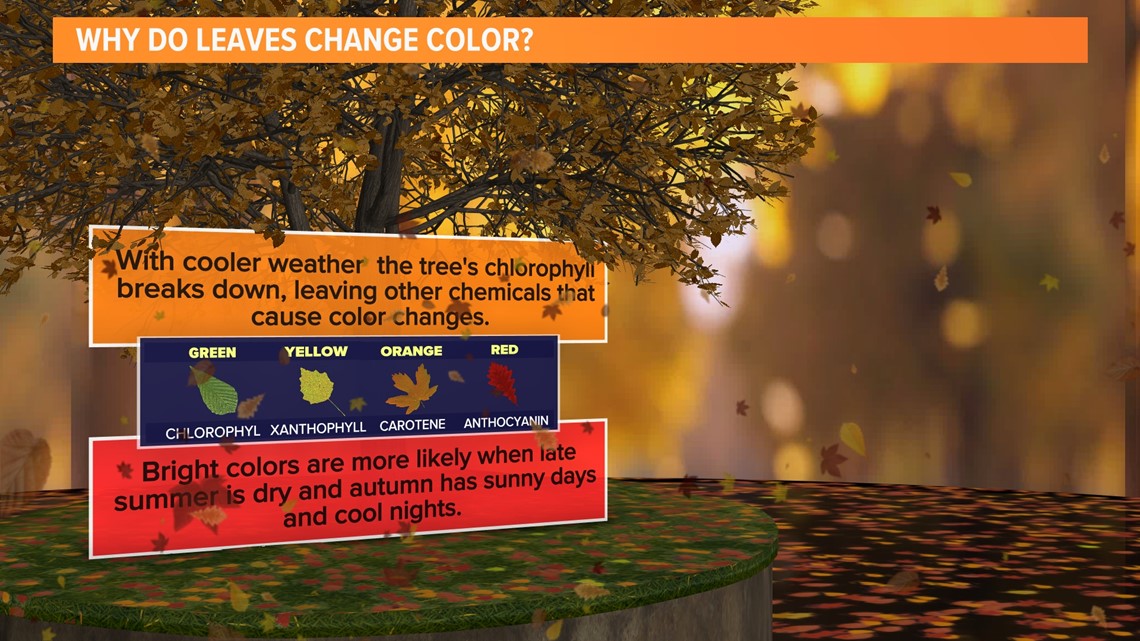
As nights get longer and cooler and days get shorter with less intense sunlight, the sugar production begins to slow down, and eventually stop.
Other pigments also present in the leaves start to show themselves after chlorophyll production stops because of the excess sugar trapped in the leaves.
These other pigments are carotenoids (responsible for shades of orange and browns), anthocyanin (responsible for reds and purple shades), and xanthophylls (yellow shades).
How much do leaves weigh?
Here's something you might not have considered, how much do all the leaves on a tree weigh?
It varies a lot by tree given what their leaves are like.
For a "typical" mature oak tree, all those leaves can add up to over 500 pounds.
If it rains, that weight can be four times higher -- talk about a heavy burden. That's why it's always easier to rake leaves when they're dry.
Meteorologist Alden German
Facebook: Facebook.com/AldenGermanWX | Twitter: @WXAlden
Make it easy to keep up-to-date with more stories like this. Download the WHAS11 News app now. For Apple or Android users.
Have a news tip? Email assign@whas11.com, visit our Facebook page or Twitter feed.



